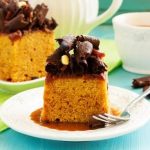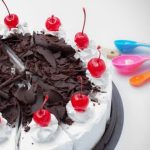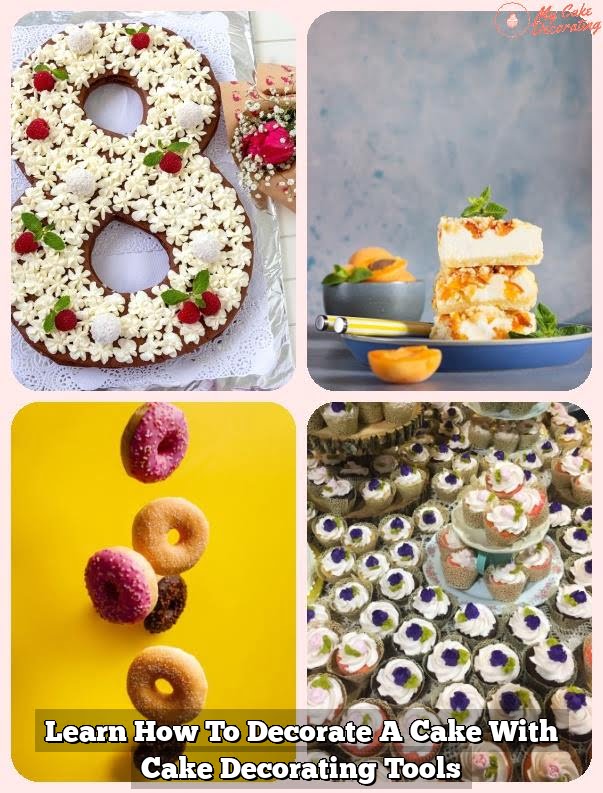Are you ready to learn how to frost and decorate a cake like a pro? Whether you’re a beginner in the world of baking or an experienced home baker looking to improve your skills, mastering the art of cake decorating is an essential skill. From choosing the right cake to troubleshooting common issues, this comprehensive guide will walk you through everything you need to know to create stunning, professional-looking cake designs.
Cake decorating is more than just spreading frosting on top of a cake. It’s about transforming a simple dessert into a visually appealing masterpiece that not only tastes delicious but also looks impressive. In this article, we’ll cover all aspects of the cake decorating process, from selecting the perfect cake base to using different techniques for decoration. By following our step-by-step instructions and helpful tips, you’ll be able to create beautiful cakes for any occasion.
In the following sections, we’ll explore factors to consider when choosing the right cake base and discuss essential tools and materials for frosting and decorating. We’ll also provide a detailed step-by-step guide on how to frost a cake perfectly and explore various techniques for decorations, including piping and fondant.
Additionally, we’ll share tips for achieving professional-looking designs and creative ideas for cake decorations, along with troubleshooting common issues and how to fix them. So let’s get started on your journey to becoming a master cake decorator.
Choosing the Right Cake
When it comes to frosting and decorating a cake, choosing the right type of cake is essential for a successful outcome. Here are some factors to consider when choosing the perfect cake for your decorating project:
1. Flavor: The flavor of the cake plays a crucial role in determining the overall taste of the final product. Whether you prefer classic flavors like vanilla or chocolate, or more adventurous flavors like red velvet or lemon, be sure to choose a flavor that complements the frosting and decorations you have in mind.
2. Texture: The texture of the cake will impact how well it holds up to frosting and decorations. A dense and sturdy cake, such as pound cake or carrot cake, is ideal for elaborate decorations and intricate designs. On the other hand, light and airy cakes like chiffon or sponge cakes are better suited for simple frosting and minimal decorations.
3. Size and Shape: Consider the size and shape of the cake based on your intended design or theme. A round layer cake provides a blank canvas for various decoration techniques, while a sheet cake is perfect for showcasing piped designs or themed decorations.
By taking these factors into account, you can ensure that you choose the right cake for your frosting and decorating project, setting yourself up for success in creating a stunning masterpiece that not only looks amazing but also tastes delicious.
Essential Tools and Materials for Frosting and Decorating
When it comes to frosting and decorating a cake, having the right tools and materials is essential for achieving professional-looking results. Whether you’re a beginner or an experienced baker, there are certain items that are absolutely necessary for creating beautifully frosted and decorated cakes.
Basic Tools
Before getting started, make sure you have a good quality offset spatula for spreading the frosting, as well as a bench scraper for smoothing the sides of the cake. A turntable is also incredibly helpful for evenly applying the frosting and decorations, while parchment paper or wax paper can be used to prevent the cake stand from getting messy during the decorating process.
Frosting Materials
For frosting your cake, you’ll need a few key ingredients such as butter, powdered sugar, vanilla extract, and cream or milk. It’s also important to have food coloring on hand if you plan on tinting your frosting with different colors. Additionally, consider investing in a piping bag and various piping tips for creating intricate designs on your cake.
Decorating Materials
When it comes to decorating your cake, there are endless possibilities. Some essential materials include edible decorations such as sprinkles, edible glitter, fresh fruit, chocolate shavings or curls, and edible flowers. If you plan on using fondant for decoration, make sure to have a rolling pin and cornstarch for rolling it out smoothly.
By ensuring that you have these essential tools and materials on hand before you begin frosting and decorating your cake, you’ll be better prepared to create a stunning masterpiece that looks as good as it tastes.
Step-by-Step Guide to Frosting a Cake Perfectly
Frosting a cake may seem like a simple task, but achieving the perfect finish requires attention to detail and the right technique. Follow this step-by-step guide to ensure that your cake is frosted perfectly every time.
Prepare the Cake
Before you begin frosting, make sure that your cake layers are completely cooled. If the cake layers are still warm, the frosting will melt and create a messy finish. You can also level your cake layers at this point if needed, using a serrated knife to remove any domed tops and create a flat surface for frosting.
Apply a Crumb Coat
To prevent crumbs from getting into your final layer of frosting, start by applying a thin layer of frosting all over the cake. This initial layer, known as a crumb coat, will seal in any loose crumbs and provide a smooth base for the final layer of frosting. Use an offset spatula to spread the frosting evenly across the top and sides of the cake.
Final Coat of Frosting
Once the crumb coat has set, it’s time to apply the final layer of frosting. Start by adding a large dollop of frosting to the center of the cake’s top surface, then use an offset spatula to spread it outwards towards the edges. Continue spreading and smoothing the frosting until you achieve an even and polished finish.
By following these step-by-step instructions for frosting a cake perfectly, you’ll be able to create beautiful and professional-looking cakes that are sure to impress any crowd. Remember, practice makes perfect – so don’t be discouraged if your first attempt isn’t flawless. Keep honing your skills, experimenting with different techniques, and before long you’ll be decorating cakes like a pro.
Different Techniques for Cake Decoration
When it comes to cake decoration, there are various techniques that can be used to create stunning designs. Piping is a popular method that involves using a pastry bag and different piping tips to create intricate patterns and designs on the cake. This technique allows for great precision and control, making it ideal for creating delicate flowers, intricate borders, and personalized messages on the cake.
Another popular technique for cake decoration is working with fondant. Fondant is a versatile sugar paste that can be rolled out and draped over the cake to create a smooth, flawless finish. It can also be sculpted into various shapes and figures, making it perfect for creating three-dimensional decorations such as flowers, ribbons, and even characters. Fondant allows for endless possibilities when it comes to design and can give your cake a polished and professional look.
In addition to piping and fondant, there are many other creative techniques that can be used to decorate a cake. These include using edible paints and airbrushing for adding color and depth to the design, as well as using stencils and edible glitter for adding texture and sparkle. Each of these techniques offers unique opportunities for expressing creativity and personalizing your cake design according to different themes or occasions.
With these different techniques at your disposal, you have the freedom to experiment with various styles of cake decoration until you find the perfect combination that suits your preferences. Whether you prefer the precision of piping, the versatility of fondant, or the artistic possibilities of painting and stenciling, mastering these techniques will allow you to elevate your cake decorating skills and create truly impressive designs each time.
Tips for Achieving Professional-Looking Cake Designs
When it comes to achieving professional-looking cake designs, attention to detail is key. One important tip is to ensure that your cake is level and evenly baked before even attempting to decorate. Use a cake leveler or a long serrated knife to trim any domed top off the cake and make sure it sits flat on your decorating surface.
Another crucial aspect of achieving a professional-looking cake design is using the right tools and materials. Invest in quality piping bags, tips, offset spatulas, and a turntable for smoother frosting application. Additionally, having the right consistency of frosting or icing is vital for successful decoration. Stiff peaks are perfect for piping intricate designs, while thinner consistency works best for spreading smoothly over the cake.
Creativity plays a huge role in achieving professional-looking cake designs as well. Whether you’re going for a simple yet elegant minimalist design or an elaborate, eye-catching theme, practicing and experimenting with different techniques will help you develop your own unique style. Combine various decorations such as fresh flowers, edible pearls, sprinkles, or fondant cutouts to create visually stunning cakes that will impress any crowd.
| Aspect | Tip |
|---|---|
| Cake Leveling | Use a cake leveler or serrated knife to keep the cake even. |
| Tools and Materials | Invest in quality piping bags, tips, offset spatulas and turntable. |
| Creativity | Experiment with different decorations and techniques. |
Creative Ideas for Cake Decorations
When it comes to cake decorating, the possibilities are endless. Choosing a theme for your cake decoration can set the tone for the entire design.
Whether it’s a children’s birthday party, a bridal shower, or a holiday celebration, selecting a theme will help guide your color choices and design elements. For example, if you’re decorating a cake for a beach-themed party, you may want to use tropical colors like turquoise and coral, as well as edible decorations such as seashells or palm trees.
In addition to themes, colors play a crucial role in cake decoration. The color scheme of your cake should complement the overall theme and create visual appeal. You can use food coloring to tint frosting in various shades or create an ombre effect on the cake layers. It’s important to consider color theory and how different hues work together when planning your cake decorations.
Toppings are another important aspect of cake decorating. From fresh fruit and edible flowers to chocolate shavings and sprinkles, choosing the right toppings can enhance the flavor and visual appeal of your cake. For example, if you’re decorating a classic chocolate cake, fresh raspberries or gold leaf accents can add an elegant touch. Experimenting with different textures and flavors can elevate your cake decorations to the next level.
| Theme | Color Scheme | Toppings |
|---|---|---|
| Beach-Themed Party | Turquoise and Coral | Seashells, Palm Trees |
| Bridal Shower | Pastel Shades | Edible Flowers, Pearls |
| Holiday Celebration | Festive Reds and Greens | Sprinkles, Candy Canes |
Troubleshooting
When it comes to frosting and decorating a cake, there can be a few common issues that may arise. It’s important to know how to troubleshoot these problems and fix them in order to achieve the perfect cake design. Here are some common issues you may encounter while frosting and decorating a cake, along with tips on how to fix them:
1. Crumbs in the Frosting:
If you find that there are crumbs getting into your frosting as you spread it on the cake, don’t worry – this is a common issue. To fix this, you can try using a crumb coat. A crumb coat is a thin layer of frosting that seals in the crumbs before adding the final layer of frosting.
2. Uneven Frosting:
Sometimes, when trying to frost a cake, you may end up with an uneven layer of frosting. To fix this issue, use a bench scraper or offset spatula to smooth out the frosting evenly around the cake. Make sure to apply gentle pressure and work your way around the cake until it’s evenly covered.
3. Fondant Cracks or Tears:
If you’re using fondant for decorating your cake and notice cracks or tears in the fondant, you can try repairing it by gently rubbing the cracked area with a small amount of vegetable shortening or water and then smoothing it out with your fingers.
By being aware of these common issues and knowing how to fix them, you can ensure that your frosted and decorated cake turns out perfectly every time.
Conclusion
In conclusion, mastering the art of frosting and decorating a cake is a skill that can be learned and perfected with some practice and creativity. By following the step-by-step guide and learning about different techniques for cake decoration, you can create beautiful and professional-looking designs that will impress your family and friends. Whether you choose to use piping, fondant, or other methods, the key is to have fun and let your imagination run wild.
Once you have completed your masterpiece, it’s important to showcase it properly. Whether it’s for a special occasion or just because, displaying your beautifully decorated cake in a prominent place will allow everyone to admire your hard work. Additionally, ensuring proper maintenance of your cake is crucial for preserving its beauty. Storing it in the right conditions and handling it with care will help maintain its freshness and appearance for as long as possible.
Remember that every cake decorating experience is a learning opportunity. It’s okay to make mistakes along the way – troubleshooting common issues such as air bubbles in fondant or uneven frosting can help improve your skills for future projects. With time and practice, you will become more confident in your abilities and may even discover new creative ideas for cake decorations.
So go ahead, unleash your inner artist, and create stunning cakes that not only look impressive but taste delicious too. Showcasing them proudly and ensuring their proper maintenance will allow you to share the joy of cake decorating with others for years to come.
Frequently Asked Questions
How Do You Decorate a Cake With Frosting for Beginners?
Decorating a cake with frosting as a beginner can be both fun and challenging. The first step is to ensure that the cake is completely cooled before you start frosting. Using an offset spatula or a straight icing spatula, apply a crumb coat of frosting to the entire cake to seal in any crumbs.
Then, once the crumb coat has set, apply a thicker layer of frosting to achieve your desired look. You can get creative with different piping tips and techniques for decorations, but remember that practice makes perfect when it comes to cake decorating.
What Is the Proper Way to Frost a Cake?
The proper way to frost a cake involves several key steps to ensure a smooth and even finish. Start by placing the cake on a rotating turntable, if available, to make the process easier. Apply a generous amount of frosting on top of the cake and use an offset spatula to spread it evenly over the top and down the sides.
To create a smooth finish, dip the spatula in hot water and then run it over the frosting. Repeat this process until you achieve your desired look, and don’t forget to add any additional decorations or piping as needed.
How Far in Advance Can I Frost and Decorate a Cake?
It is generally best to frost and decorate a cake no more than one day in advance of serving. This timeframe allows for the flavors to meld together while ensuring that the texture of the cake remains fresh.
However, some cakes with stable frostings or fillings can be prepared up to two days in advance if stored properly in an airtight container or wrapped well in plastic wrap. Be sure to consider any perishable ingredients in your frosting or filling when deciding how far in advance you can prepare your cake for an event.

Welcome to my blog about home and family. This blog is a place where I will share my thoughts, ideas, and experiences related to these important topics. I am a stay-at-home mom with two young children. I hope you enjoy reading it! and may find some helpful tips and ideas that will make your home and family life even better!





